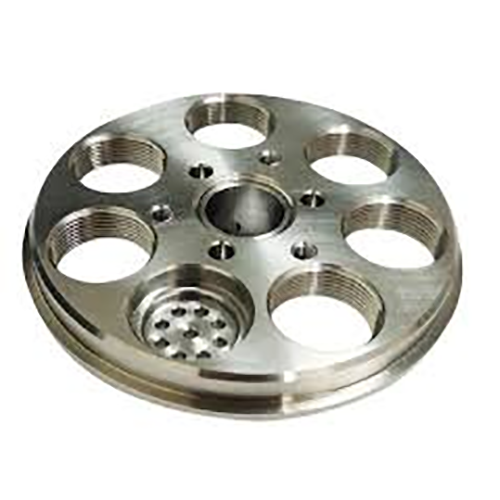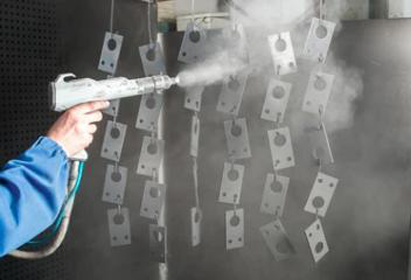
Attaining target exterior polish for a CNC part is critical.
- Blueprint callouts define exact texture requirements for manufactured pieces
- Callouts frequently reference metrics such as Ra (average roughness) for roughness quantification
- Decoding surface notes is important for ensuring components achieve required performance
- A well-defined surface finish can impact factors such as lubrication, friction, and durability
- Careful reading of finish callouts enables achieving the planned outcome
CNC Machining and Precision Engineering

Programmed machining operates as a leading production process by leveraging computer-aided programs machines execute intricate designs with remarkable accuracy.
- The technology facilitates production of complex parts across many materials
- Machine flexibility renders it suitable for medical device and electronics manufacturing
- CNC machining delivers exceptional repeatability ensuring identical parts across production runs
Across prototyping through full-scale production CNC machining serves as a cornerstone in contemporary manufacturing
Reading CNC Machine Specs
Understanding equipment specifications can look intimidating initially
However with a bit of knowledge and a systematic approach you can easily navigate these technical details
Kick off by isolating primary specs such as rpm, feed, tolerance, workspace, controller
All these values combine to influence overall operational ability.
In practice greater spindle speed often suits ductile substrates whereas higher feed supports productivity.
Comprehending those interactions assists in picking the proper CNC for tasks
Be sure to refer to vendor documentation completely.
It will often provide valuable insights and clarify any technical terminology you may encounter
Comprehensive Guide to CNC Machinery
Computer-operated machining stations are programmed units for precise automated part fabrication across materials These systems execute G-code sequences to govern tool movement and actuation.
- Representative CNC types cover milling tools, turning machines, routers, plasma cutters
- Processes are adaptable to metals, polymers, timber, and composite materials
- Besides that CNC systems permit speedy prototyping and short production runs for businesses and research groups
CNC Fundamentals and Principles
They exemplify the union of precise mechanics and modern control software Adaptive tools rely on coded programs to manufacture from simple elements to detailed structures The core idea is converting digital blueprints into tangible parts.
- Numerical control manufacturing
- Software-guided fabrication
It includes exact tool motions driven by CNC instructions Manufacturing staff set tooling parameters, oversee machining, and confirm quality outcomes.
The Role of Surface Finish in CNC Machining
Attaining target texture in CNC processes is critical It strongly influences part functionality and visual appeal Substrate properties, machining variables, and post-process methods shape surface outcome.
Polished textures increase lifespan; rough finishes may lower effectiveness Programmed machining features assorted toolpaths and cutters to deliver specified finishes.
- Including selection of alternative tool profiles |cermet inserts|RPM and feed adjustments to craft finish
- Furthermore secondary operations such as polishing, grinding, or sanding enhance finish
Seeing how process parameters map to surface output is key for optimal finishes.
An Introduction to CNC Machine Operation
This precise method uses computer-guided machinery to sculpt components from diverse substrates They run numerical instructions to manufacture complex shapes consistently Comprehending toolpaths, G-code, and tooling strategies supports effective machining
Fields benefiting from CNC include aerospace, automotive, industrial manufacturing, and electronics From turbine components to precision mold cores, CNC supports manufacture of complex parts
Surface Finish Callouts for CNC Machined Parts
Clear finish definition is critical for CNC machined components It ensures that the final product meets the requirements for function and aesthetics Designers typically indicate finish using the Ra (roughness average) metric Shown in micrometers or inches, the measurement denotes typical roughness magnitude.
Consider needed smoothness and the part’s application to determine finish requirements

In practice smoother finishes help where exact fits and close tolerances are essential
Textured surfaces may be selected to improve grip or frictional engagement
Use explicit finish instructions on design documents to convey the surface requirement Include both the Ra value along with any additional instructions such as machining processes or surface treatments.
Observe that unambiguous finish specifications are vital for manufacturing outcomes
Classification of CNC Machines and Uses
CNC machining spans many technologies and machine classes to address different operational needs They use CAD-generated toolpaths to control tooling for exact component production.
- Milling centers craft intricate contours cavities and surfaces by subtractive cutting
- Turning machines rotate stock to create symmetrical components efficiently
- Plasma machines slice thick steel and ferrous metals rapidly using plasma arcs
Machine selection is dictated by workpiece material, geometric complexity, and precision demands Every machine class brings specific strengths that serve sectors like aerospace and automotive.
Attaining Superior Surface Quality via CNC
Realizing premium surface texture is vital and CNC machining supplies tools to accomplish it By leveraging precise control over cutting parameters such as feed rate spindle speed and tool geometry machinists can effectively manipulate the material removal process to produce surfaces with minimal imperfections Furthermore the utilization of high-quality tooling materials and proper lubrication techniques contributes to a smoother finish Through careful selection of cutting strategies and meticulous machine setup CNC machining enables the creation of components with exceptional surface quality for diverse applications.
Securing Surface Finish Through CNC Programming
Programming skills that affect finish are critical for reaching surface goals Feed selection spindle rpm and cutter geometry collectively determine texture outcomes Deliberate parameter selection and optimized lubrication enable near-flawless finishes.
- Besides that systematic tool upkeep and monitoring ensure sustained surface quality Continuous tool maintenance and oversight preserve high finish consistency Besides that systematic tool upkeep and monitoring ensure sustained surface quality
- In pursuit of improved finish examine material properties, roughness goals and application
- Simulation aids in adjusting parameters virtually to prevent surface problems
- Continuous tool maintenance and oversight preserve high finish consistency
